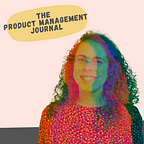The PM Journal | Log 08
Blueprint in product management
Today I decided to share with you a tool that has helped me a little in the past, but nowadays it has been put to good use.
Blueprint.
Blueprint is used to design a plan and guide us throughout the vision. It can illustrate a strategy, a journey, and so on.
I will share here my most recent Blueprint and how it has helped our team.
Due to CONVID-19, many companies had to invent, reinvent, and/or adapt their products. That was not different for us. We saw a possibility regarding our market, and we decided to pursue it.
Like the virus, this opportunity came quickly, and we had to hurry with product discovery to ideate together a fast solution. Luckily, we had a satisfying volume of data that helped us to move instantly.
For our product discovery, we spent a day investigating and discussing the risks: what is the value? is it feasible? is it viable? will people use it?
Then we used the Disney Creative Strategy (very well explained in here thanks to the Miro team) to put together our thoughts. That is what we did:
It does not look great and it was not ideal 😅 but we had to adjust during the three hours of discovery and it was merited. We succeed and that is important.
When we were mixing our ideas, we preferred to do it like a journey so we could align better the technicalities with necessities.
We were doing this in a day, certainly we did not have mockup yet, just requirements and data. Thus, we needed a way to illustrate what it was in our minds and our analyses. And why not use Blueprint which is an excellent tool to outline a plan?!
We mapped the solution and that is what we created:
We use Miro as a collaborative platform. It has a Blueprint template that accommodates a lot. Although they explain very well how to use the template, I have made a few modifications that assist me better.
Similar to the User Story Mapping from Jeff Patton, I set the first row as activities. Pieces of the steps in a journey to complete the purpose.
Then for the second and third rows, I state the actions a user will take ahead of the journey. It contains the first interaction for the specific step as well as the second interaction in case there are extra scenarios to attempt.
In the fourth row, I specify the actions and contacts that our product will return to the user. No need to be extremely precise with the architecture, it serves to emphasize the communications we will do conforming user’s particular behavior.
The last row is called “support processes”. I use it for two things: 1. to indicate any extra support we have across the journey; and/or 2. what I want to track in specific moments. Using it for measurement, it helps me to think ahead of what it is important to learn for continuous improvement.
We created one Blueprint for new users and another for returning users. Both flows are slightly different and having it divided gives us distinct perspectives on each persona.
That means we can easily identify their journeys and what responses we might have to make. 💖
I really enjoy utilizing Blueprint to facilitate my work and to provide more clarity to the team.
(Please notice that I’m not native in English and I apologize for mistakes)
